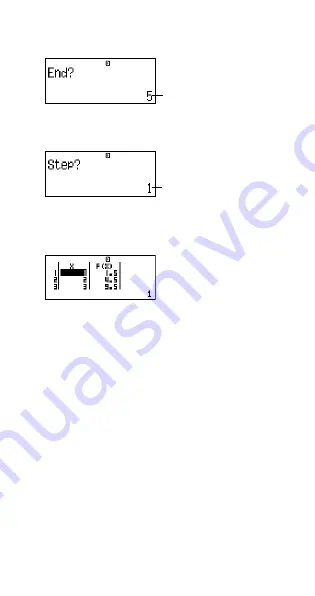
E-61
(4) After specifying the start value, press
=
.
• This displays the end value input screen.
• Specify the end value.
(5) After specifying the end value, press
=
.
• This displays the step value input screen.
• Specify the step value.
• For details about specifying the start, end, and step values,
see “Start, End, and Step Value Rules”.
(6) After specifying the step value, press
=
.
• Pressing the
A
key returns to the function editor screen.
k
Supported Function Types
• Except for the X variable, other variables (A, B, C, D, Y) and
independent memory (M) are all treated as values (the current
variable assigned to the variable or stored in independent memory).
• Only variable X can be used as the variable of a function.
• The derivative (
d
/
dx
), integration (
∫
), coordinate conversion (Pol,
Rec), and sum (
Σ
) functions cannot be used for a number table
generation function.
• Note that the number table generation operation causes the
contents of variable X to be changed.
k
Start, End, and Step Value Rules
• Linear format is always used for value input.
• You can specify either values or calculation expressions (which
must produce a numeric result) for Start, End, and Step.
• Specifying an End value that is less than the Start value causes
an error, so the number table is not generated.
• The specified Start, End, and Step values should produce a
maximum of 30
x
-values for the number table being generated.
Executing a number generation table using a Start, End, and Step
value combination that produces more than 30
x
-values causes
an error.
Indicates the initial default step
value of 1.
Indicates the initial default end
value of 5.









































